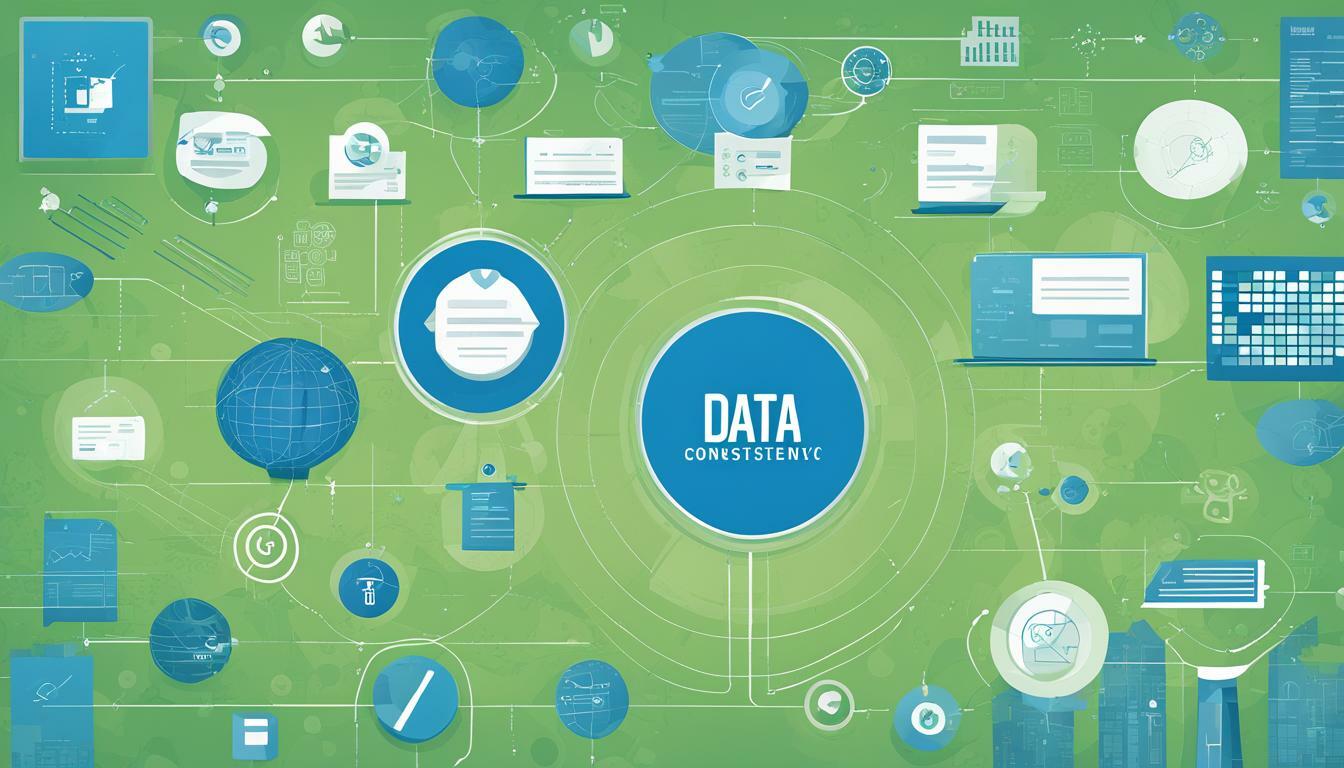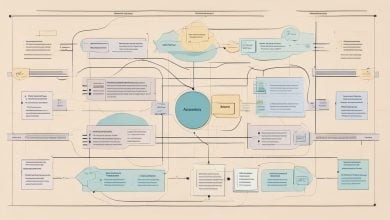
Data consistency is a critical component of data management that ensures the accuracy and reliability of business information. It refers to the uniformity and coherence of data across an organization’s systems, applications, and processes. In today’s data-driven world, maintaining consistent data is more important than ever, as it empowers businesses to make informed decisions, improve productivity, and enhance customer experiences.
In this article, we will explore the importance of data consistency and the benefits it brings to organizations. We will also discuss strategies for achieving data consistency, overcoming challenges, and measuring its impact on business performance.
Key Takeaways
- Data consistency is crucial in ensuring accurate and reliable business information.
- Maintaining consistent data leads to better decision-making, increased efficiency, and improved customer experiences.
- Effective data governance and quality management are essential for achieving data consistency.
What is Data Consistency?
Data consistency is the degree to which data is uniform and consistent across an organization’s information systems. It is achieved when data is accurate, complete, and up-to-date. Data consistency is critical for ensuring data integrity, which refers to the overall reliability and trustworthiness of data.
However, achieving data consistency can be challenging due to several factors, including the use of multiple systems and applications, data silos, and inconsistent data management practices. Inconsistent data can lead to errors, duplication of effort, and decreased efficiency, which can impede an organization’s ability to make informed decisions.
To achieve data consistency, organizations must implement data management practices that ensure data accuracy, completeness, and up-to-date information. This involves defining clear data standards, establishing data governance frameworks, and employing data validation techniques.
The Role of Data Quality in Ensuring Consistency
Data consistency is critical for businesses to make informed decisions and optimize performance. However, achieving and maintaining data consistency can be challenging, given the complex nature of data management. That’s where data quality comes into play.
Effective data quality practices are essential for maintaining data consistency. Organizations must implement proper measures to ensure data accuracy, completeness, and validity, among others. These measures must be integrated into the organization’s data management processes to achieve consistency across all data sets.
Data quality practices can also help identify inconsistencies across data sets. By detecting these inconsistencies, organizations can take corrective steps and ensure that data is consistent, accurate, and reliable.
Having a robust data quality framework in place can provide many benefits to businesses. It can lead to improved data-driven decision-making, more efficient processes, and better customer experiences. By ensuring that data is consistent, businesses can avoid costly mistakes and optimize their operations for success.
The Role of Data Governance in Ensuring Data Consistency
Data consistency is essential for businesses that depend on data-driven decision-making. Achieving and maintaining data consistency requires a robust data governance framework. Data governance entails the creation of policies, procedures, and processes to ensure that data is managed and utilized effectively and efficiently across an organization.
A successful data governance framework ensures that data is accurate, trustworthy, and accessible. Additionally, it supports the identification, classification, and management of sensitive and critical data. Data governance also ensures that data is used ethically and complies with regulations and statutory requirements.
One of the key elements of data governance is the establishment of data standards, which involves defining and enforcing protocols for data management. Standardization ensures that data is consistent and uniform across an organization, making it easier to understand and analyze. Data governance also involves the appointment of data stewards, who are responsible for managing specific data domains, ensuring data quality, and promoting data consistency.
| The Benefits of Data Governance for Data Consistency |
|---|
| Improved Data Quality: Data governance ensures that data is accurate, complete, and up-to-date, reducing the risk of errors and inconsistencies. |
| Enhanced Data Security: Data governance helps organizations maintain the confidentiality, integrity, and availability of their data, reducing the risk of data breaches and cyberattacks. |
| Better Decision-Making: Data governance supports the integration of data from different sources, improving the accuracy and reliability of analytics and reporting. |
Implementing a data governance framework is not a one-time event. It requires ongoing efforts to ensure that policies, procedures, and processes are updated regularly to reflect changes in business operations, regulatory requirements, and technological advancements. As such, it is crucial to have a team that is dedicated to managing data governance activities within an organization.
In conclusion, data governance plays a critical role in achieving and maintaining data consistency, accuracy, and quality. It provides a solid foundation for effective data management, ensuring that data is utilized ethically, securely, and in compliance with regulations. Organizations that prioritize data governance will reap the benefits of improved data quality, better decision-making, and enhanced data security.
Strategies for Improving Data Consistency
Ensuring consistent data management can be challenging, but there are proven strategies that can help organizations achieve data consistency. Here are some of the key strategies:
Data Standardization
Standardizing data is one of the fundamental aspects of achieving data consistency. Implementing standardized naming conventions, data formats, and data definitions can significantly reduce inconsistencies in data.
Organizations can also use tools such as data dictionaries or data catalogs to maintain a centralized repository of data definitions, ensuring that all stakeholders have a shared understanding of the data.
Data Integration
Data integration involves combining data from various sources into a single, unified view. This can help eliminate data silos and ensure that data across the organization is consistent.
Using automated data integration tools can help organizations streamline the integration process and ensure data consistency at scale. It is also important to establish data integration standards and best practices to ensure consistency across all integration efforts.
Data Validation Techniques
Data validation techniques such as data profiling, data cleansing, and data quality checks can help organizations identify and correct inconsistencies in data.
Implementing automated data validation processes can help organizations detect and address data inconsistencies immediately, reducing the risk of errors propagating throughout the organization.
These strategies can help organizations achieve data consistency and ensure that their data is accurate, reliable, and actionable.
Measuring Data Consistency: Key Metrics and Tools
Measuring data consistency is vital to maintaining high-quality data that can be relied upon for business decisions. By establishing key metrics and using appropriate tools, organizations can assess and monitor their data quality, ensuring that it is consistent across all systems and applications.
Key Metrics for Measuring Data Consistency
There are several key metrics that organizations can use to measure data consistency:
- Data completeness: This metric measures the percentage of complete data records, ensuring that all required data fields are populated.
- Data accuracy: This metric measures the level of correctness and precision of data, ensuring that it accurately reflects the real world.
- Data timeliness: This metric measures how up-to-date data is, ensuring that it is current and relevant.
- Data conformity: This metric measures the level of consistency of data across systems and applications.
By regularly measuring these metrics, organizations can identify areas of improvement and take steps to ensure data consistency.
Tools for Measuring Data Consistency
There are several tools available to help organizations measure data consistency. These include:
| Tool | Description |
|---|---|
| Data Profiling Tools | These tools analyze data sets and identify data quality issues, including data consistency problems. |
| Data Quality Management Tools | These tools provide a comprehensive view of data quality across an organization and can be used to monitor and improve data consistency. |
| Data Governance Tools | These tools provide a framework for managing and maintaining data consistency, including tasks such as data standardization, integration, and validation. |
Using these tools, organizations can identify data consistency issues, track progress towards achieving consistency goals, and take corrective action when needed.
Overall, measuring data consistency is a critical aspect of effective data management. By establishing key metrics and using appropriate tools, organizations can ensure that their data is reliable, accurate, and consistent across all systems and applications.
Overcoming Data Consistency Challenges in a Digital World
As organizations increasingly rely on digital tools and technologies to manage their data, new challenges arise in maintaining data consistency. Here are some of the most common challenges and strategies to overcome them:
Challenge 1: Data Fragmentation
Organizations often store data in different locations and formats, leading to data fragmentation issues. This can make it difficult to achieve data consistency and integrate data across systems.
To overcome this challenge, organizations should prioritize data integration efforts. Implementing a centralized data management system can help ensure that all data is stored in a consistent format and is easily accessible by all relevant parties.
Challenge 2: Data Migration
When migrating data from one system to another, data consistency can be compromised. This is because data may be lost or corrupted during the migration process.
Organizations should implement strict data migration protocols to ensure that all data is properly transferred and validated during the migration process. This can include conducting data quality checks before and after the migration to ensure that the data is accurate and consistent.
Challenge 3: Data Synchronization
Keeping data consistent across different systems and applications can be a major challenge for organizations. This is because different systems may have different data formats or may not be updated in real-time.
To overcome this challenge, organizations should prioritize data governance and data stewardship practices. This can help ensure that all data is kept up-to-date and is accurate across all systems and applications.
By implementing these strategies, organizations can overcome the data consistency challenges posed by a digital world. This can help them maintain high-quality data and make more informed decisions based on reliable information.
Ensuring Data Consistency across Systems and Applications
Data consistency is critical to the success of any organization, but it can be a challenge to maintain consistency across different systems and applications. Achieving data consistency requires a systematic approach to data management that involves data governance, data integration, and data stewardship.
Data Integration Techniques
Data integration is the process of combining data from different sources to provide a unified view of the data. This can be a challenge when dealing with data stored in different formats, with varying levels of granularity and complexity. However, there are several techniques that can be used to overcome these challenges and achieve data consistency.
One common approach is to use Extract, Transform, and Load (ETL) tools to consolidate data from different sources into a central repository. These tools can help to automate the data integration process and ensure that data is transformed into a consistent format before being loaded into the repository.
Another approach is to use Application Programming Interfaces (APIs) to connect different applications and systems and facilitate the exchange of data between them. This approach can help to ensure that data is consistent across different applications and systems.
Data Governance Practices
Data governance refers to the policies, procedures, and standards that organizations put in place to ensure the effective management of their data. A robust data governance framework is essential for maintaining data consistency across systems and applications.
Key elements of a data governance framework include data quality management, data security, and data privacy. Data quality management involves the establishment of data quality metrics and the implementation of processes to monitor and maintain data quality. Data security and privacy involve the implementation of policies and procedures to protect sensitive data from unauthorized access or disclosure.
Data Stewardship
Data stewardship refers to the management of data within an organization, including the monitoring and maintenance of data quality and consistency. Data stewards are responsible for ensuring that data is accurate, complete, and consistent across systems and applications.
Effective data stewardship requires a collaborative approach that involves the sharing of knowledge and resources across departments and teams. Organizations can establish data stewardship committees or assign data stewardship responsibilities to specific individuals within each department or team.
In conclusion, ensuring data consistency across systems and applications requires a comprehensive approach to data management that involves data integration, data governance practices, and data stewardship. By prioritizing data consistency, organizations can improve decision-making, enhance customer experiences, and increase operational efficiency.
The Impact of Data Consistency on Business Performance
The importance of maintaining data consistency cannot be overstated. In today’s data-driven world, businesses rely on accurate and reliable information to make informed decisions, improve customer experiences, and optimize operations. Consistent data plays a critical role in achieving these objectives, providing a solid foundation for business success.
By prioritizing data consistency, organizations can reap numerous benefits. First and foremost, consistent data leads to improved decision-making. When data is accurate and reliable, leaders can make confident choices that drive business success. Additionally, consistent data enhances customer experiences. By providing accurate and up-to-date information, businesses can build trust with their customers, delivering the experiences they expect and deserve. Finally, consistent data increases operational efficiency. When processes are built on reliable information, organizations can optimize their operations, reduce costs, and improve productivity.
Businesses that prioritize data consistency gain significant competitive advantages. By leveraging the power of consistent data, organizations can unlock new opportunities, drive innovation, and achieve success in today’s dynamic market.
Conclusion
By prioritizing data consistency, organizations can ensure that they have reliable information that leads to better decision-making, enhanced customer experiences, and increased operational efficiency.
To achieve data consistency, it is essential to focus on data quality and establish effective data governance frameworks. Organizations can also employ various strategies such as data standardization, data integration, and data validation techniques to improve data consistency.
Monitoring data consistency through key metrics and tools is crucial for maintaining high-quality data. It is also important to overcome the challenges that arise in a digital world, such as data fragmentation, migration, and synchronization, and ensure consistency across systems and applications.
In conclusion, prioritizing data consistency and investing in data quality and governance is essential for organizations to achieve reliable information that drives business success.
FAQ
Q: What is data consistency?
A: Data consistency refers to the accuracy, reliability, and uniformity of data across systems and applications. It ensures that data remains the same and synchronized, enabling businesses to make informed decisions and maintain operational efficiency.
Q: Why is data consistency important?
A: Data consistency is crucial for businesses as it ensures that accurate and reliable information is available for decision-making. It helps in avoiding errors, inconsistencies, and duplication, leading to improved operational efficiency and enhanced customer experiences.
Q: What are the benefits of achieving data consistency?
A: Achieving data consistency brings several benefits to businesses. It leads to better decision-making, improved operational efficiency, enhanced customer experiences, and increased data integrity. It also helps in avoiding errors, reducing costs, and maintaining regulatory compliance.
Q: How can organizations improve data consistency?
A: Organizations can improve data consistency by implementing strategies such as data standardization, data integration, and data validation techniques. It is also important to prioritize data quality and establish a robust data governance framework to ensure consistent data across systems and applications.
Q: What are the key metrics and tools for measuring data consistency?
A: Measuring data consistency requires the use of key metrics and tools. Some commonly used metrics include data accuracy, data completeness, data timeliness, and data reliability. Tools such as data quality management software and data profiling tools can help organizations assess and monitor their data consistency.
Q: What are the challenges in maintaining data consistency in a digital world?
A: Maintaining data consistency in a digital world comes with unique challenges. These challenges include data fragmentation, data migration, and data synchronization. It is essential for organizations to adopt proper data management practices and employ data integration techniques to overcome these challenges.
Q: How can organizations ensure data consistency across systems and applications?
A: Ensuring data consistency across systems and applications requires the implementation of data integration techniques, data governance practices, and data stewardship. Organizations need to establish standardized processes, data management policies, and data quality controls to achieve consistent data throughout their operations.
Q: What is the impact of data consistency on business performance?
A: Data consistency has a significant impact on business performance. Consistent data improves decision-making, enhances customer experiences, and increases operational efficiency. It allows organizations to have a single source of truth, leading to better insights, reduced errors, and improved outcomes.








